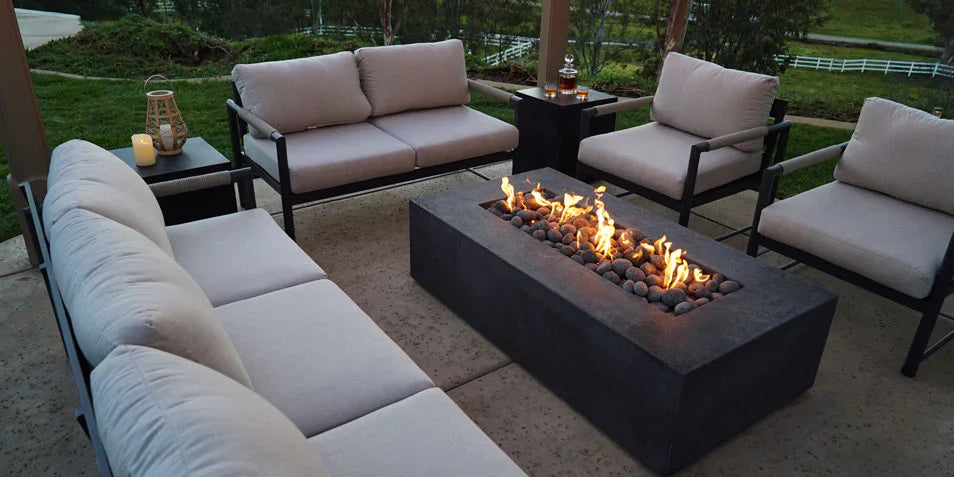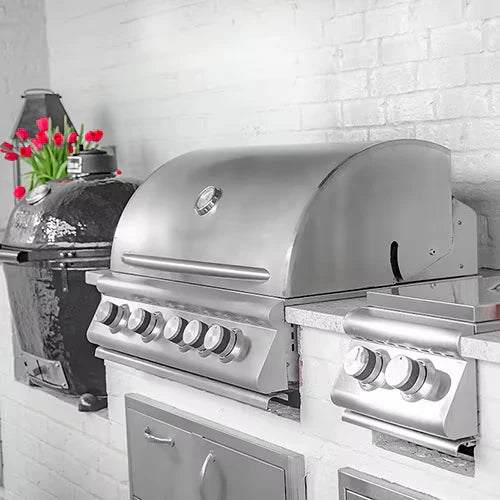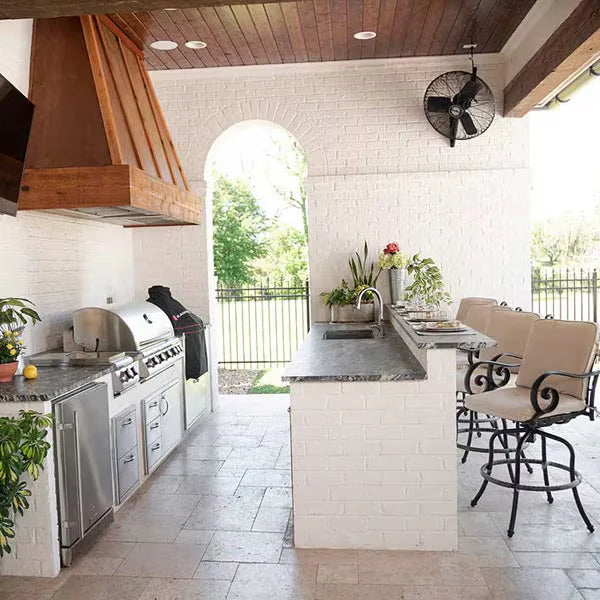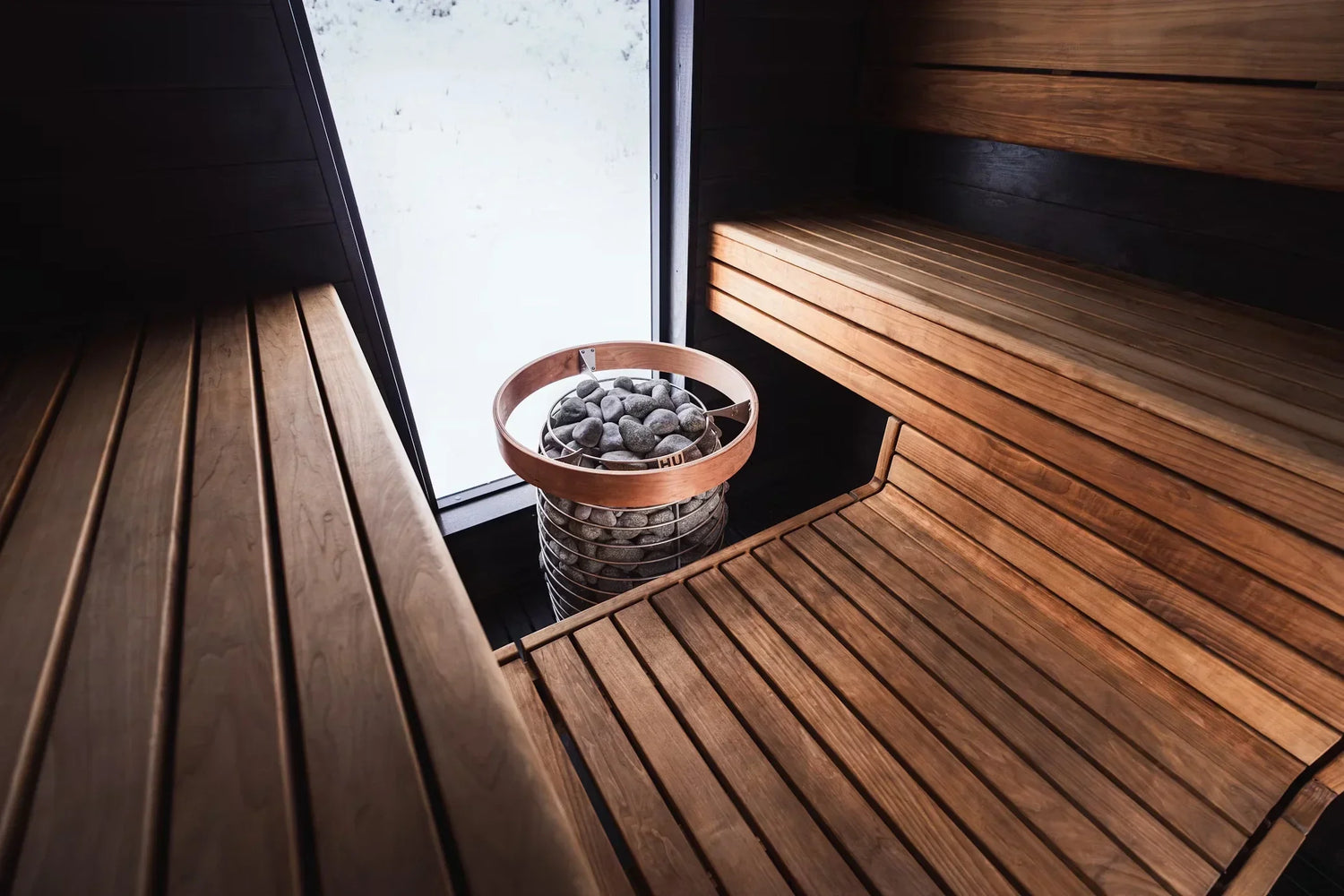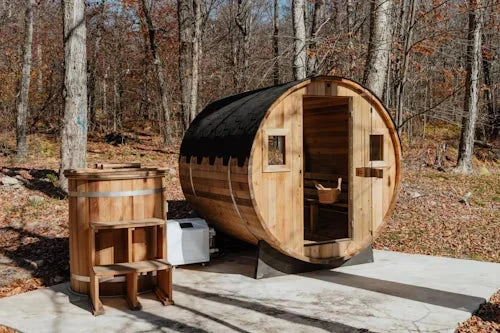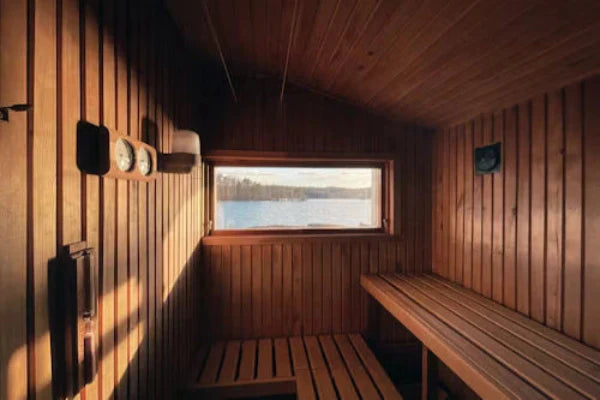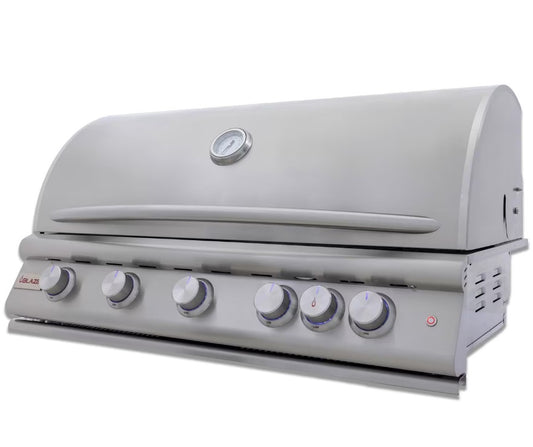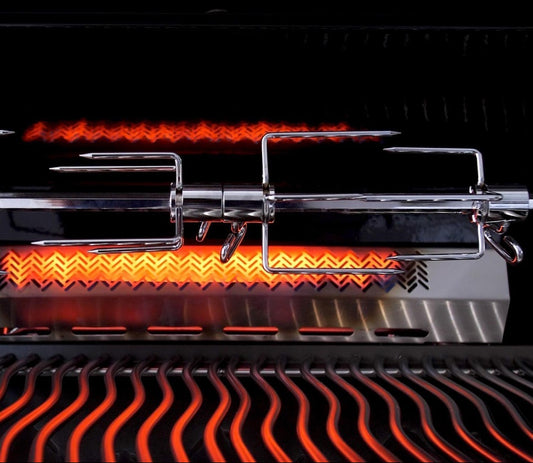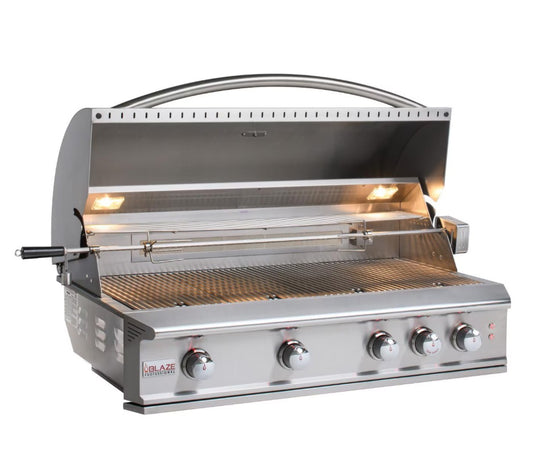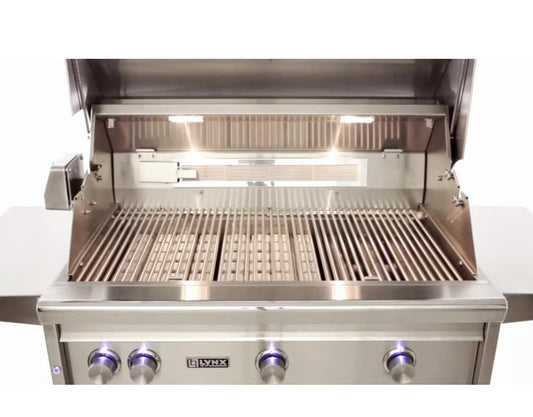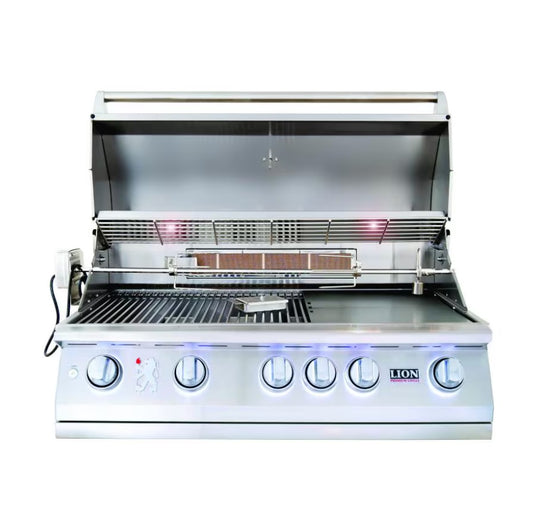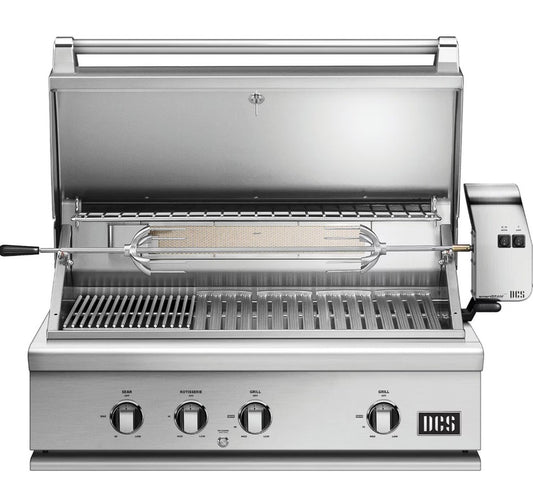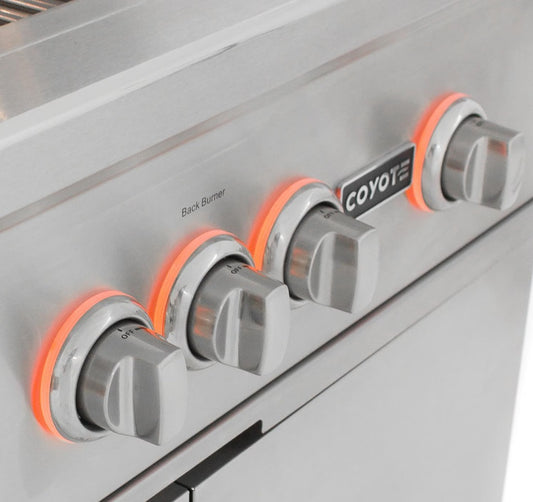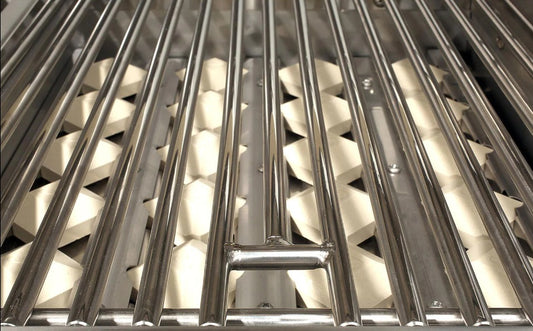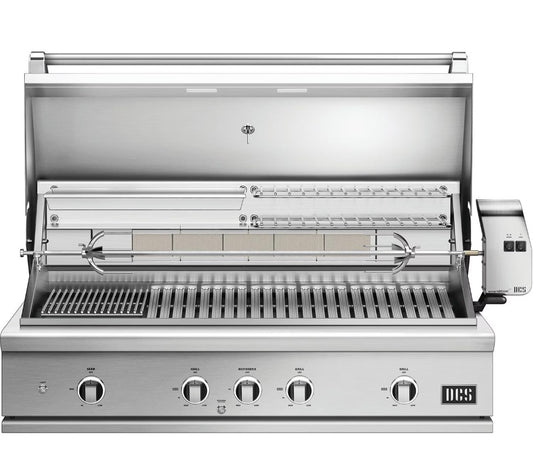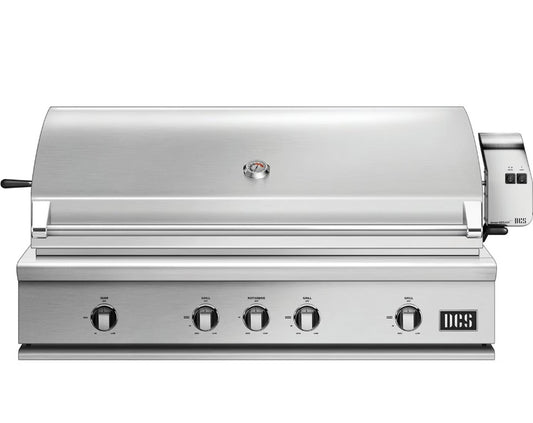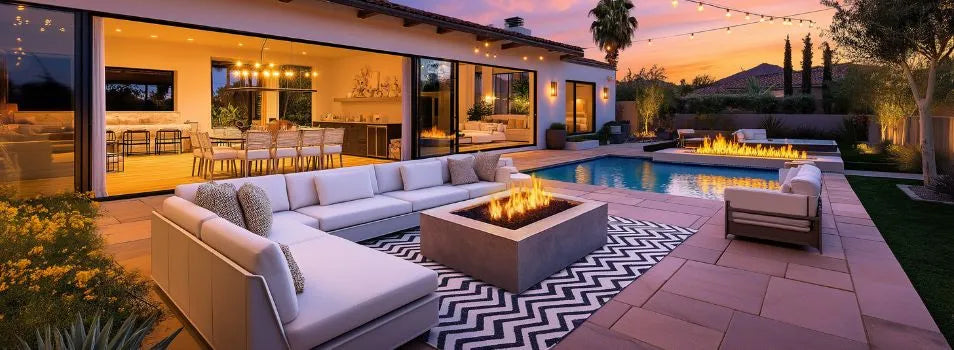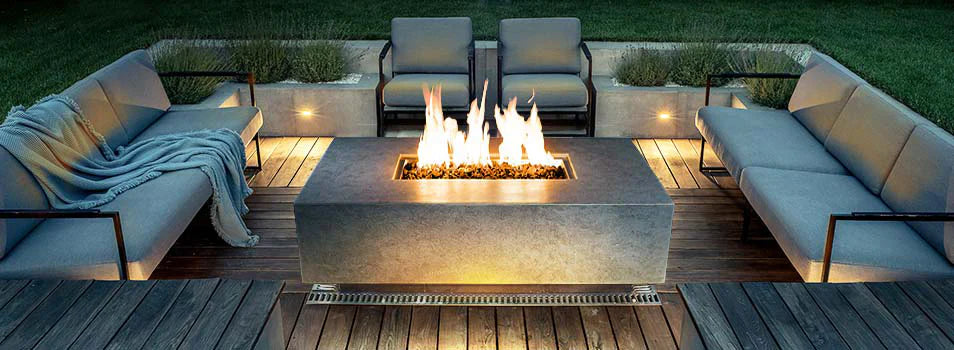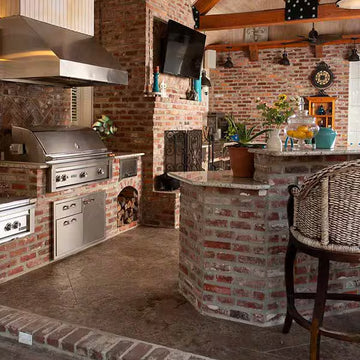
Outdoor Kitchens
Transform your backyard into a fully functional cooking space with our custom outdoor kitchens. Built for style, durability, and everyday use, they’re designed to fit your space and the way you live.
Trending Outdoor Kitchens
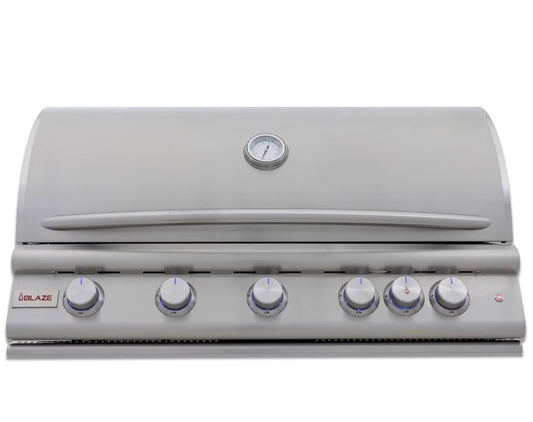
Blaze Premium LTE+ 40 Inch 5-Burner Built-In Propane Gas Grill With Lift-Assist Hood & Rear Infrared Burner
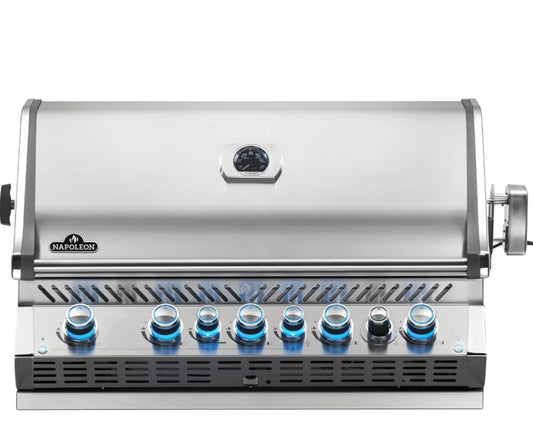
Napoleon Prestige PRO 665 5-Burner Built-in Natural Gas Grill With Rear Burner & Rotisserie
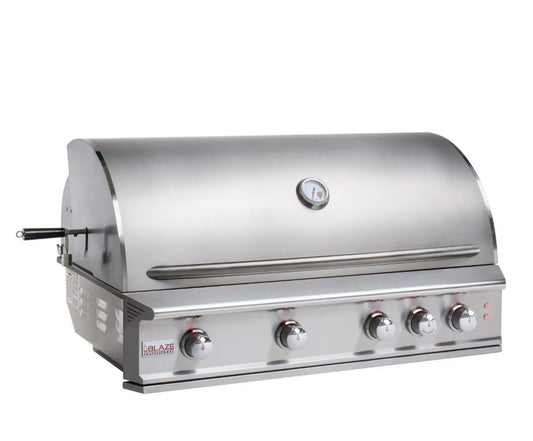
Blaze Professional LUX 44 Inch 4-Burner Built-In Propane Gas Grill With Rear Infrared Burner
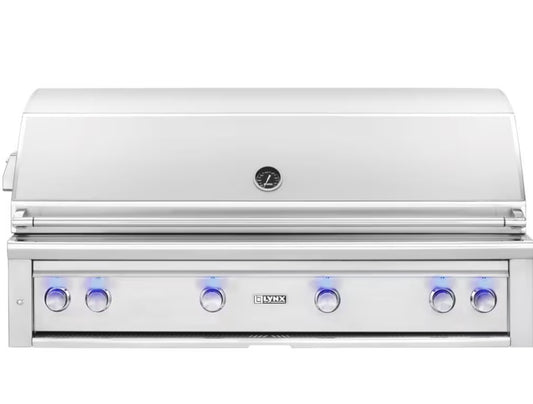
Lynx Professional 54 Inch Built-In Natural Gas Grill With One Infrared Trident Burner And Rotisserie
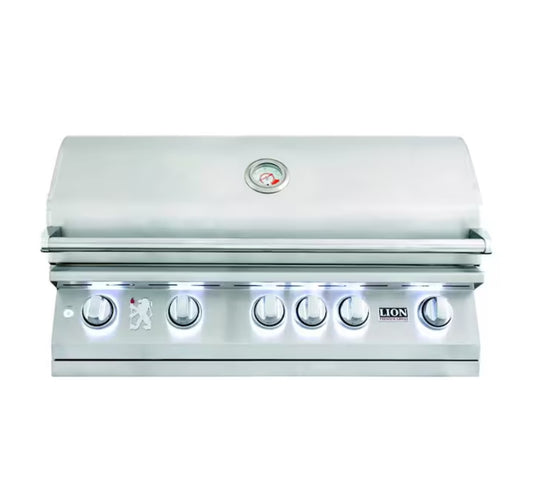
Lion L90000 40 Inch 5-Burner Built-In Natural Gas Grill
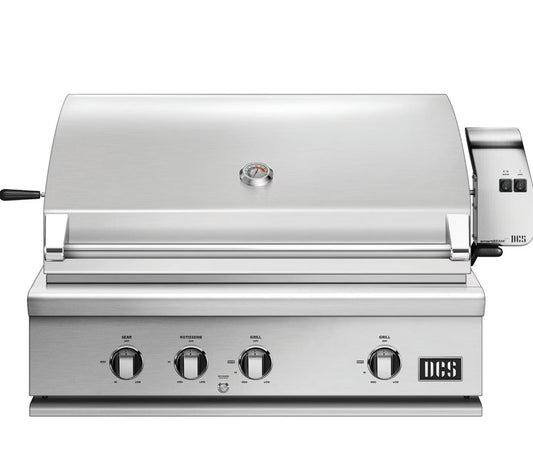
DCS Series 7 36 Inch Built-In Propane Gas Grill With Rotisserie And Infrared Burner
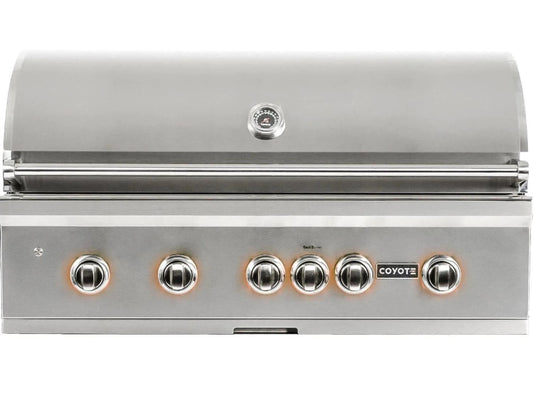
Coyote S Series 42 Inch 5-Burner Built-In Propane Gas Grill With RapidSear Infrared Burner & Rotisserie
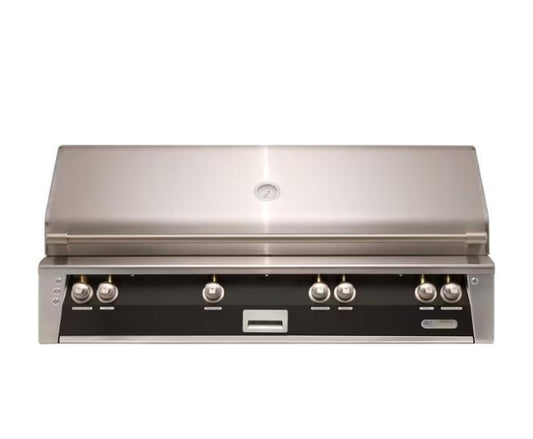
Alfresco ALXE 56 Inch Built-In Natural Gas Grill With Sear Zone And Rotisserie
Our Favorite Battle Tested Built Ins
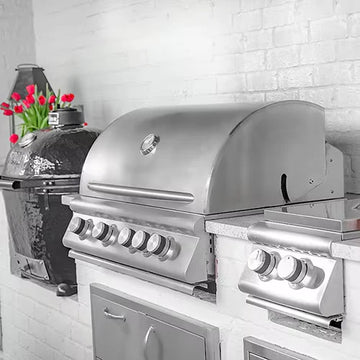
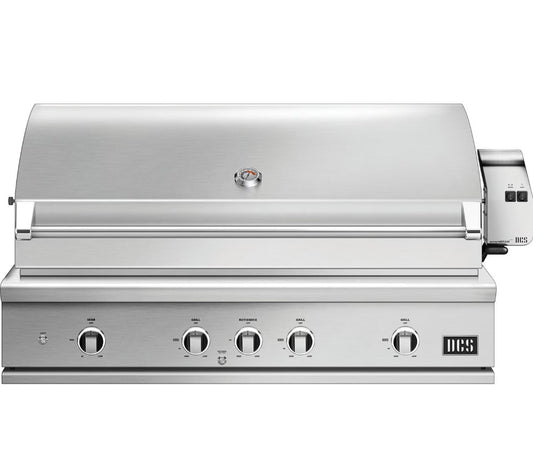
DCS Series 9 48 Inch Built-In Propane Gas Grill With Rotisserie And Infrared Burner
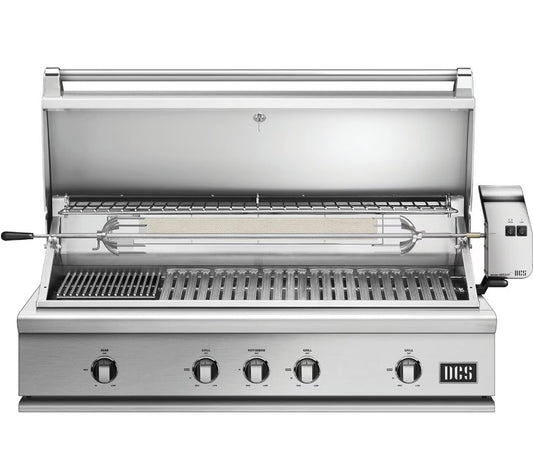
DCS Series 7 48 Inch Built-In Natural Gas Grill With Rotisserie And Infrared Burner
Blog posts
Natural Gas vs Propane Fire Pit Tables: What’s the Better Choice for You?
How Long Does a Tank of Propane Last? Here’s the Real Answer
Questions To Help You On Your Buying Journey
It really depends on how you like to cook, the flavor you're after, and how much effort you want to put in. Here’s a breakdown of each grill type to help you decide:
Gas Grills
Gas grills are great for quick, everyday cooking. They heat up fast, are easy to clean, and give you consistent temperature control with minimal effort. They’re perfect for people who want convenience and speed, like getting dinner on the table during the week. While they don’t offer that classic smoky flavor you’d get from charcoal or wood, they make up for it with ease and reliability.
Charcoal Grills
Charcoal grills are best for those who love bold flavor and a more hands-on experience. They take longer to heat up and require more cleanup, but they reward you with rich, smoky taste and more control over heat zones. If you enjoy the process of grilling and don’t mind putting in a bit of work, charcoal grilling can be incredibly satisfying.
Pellet Grills
Pellet grills are ideal for low-and-slow cooking with wood-smoked flavor. They’re powered by electricity and use compressed wood pellets to give you even heat and great taste. These grills are perfect for smoking meats like brisket, ribs, or pulled pork, and they let you set the temperature and walk away. Just know they aren’t the best for quick grilling, and you’ll need to keep wood pellets on hand.
The cost of an outdoor kitchen can range widely depending on size, materials, layout, and appliances. A simple setup with a built-in grill, basic counter, and minimal prep space typically starts between $6,000 and $12,000. A more complete, mid-range outdoor kitchen with upgraded surfaces, storage, and a fridge usually falls between $15,000 and $25,000. For high-end designs with top-tier appliances, premium finishes, overhead structures, and full utility hookups, you could easily spend $60,000 to $115,000 or more.
Appliances are a major factor in total cost. Grills alone range from $250 to over $4,500, while outdoor refrigerators fall between $500 and $1,200. Sinks, side burners, and extras like pizza ovens, wine coolers, and beverage centers can quickly add up. If you're on a budget, placing your kitchen closer to your home can save significantly on plumbing, gas, and electric work.
Materials and finishes also impact pricing. Prefab kitchen frames cost around $330 to $575 per linear foot, while custom masonry kitchens can run from $440 to $700 per linear foot or more. Veneers like natural stone, granite, or poured concrete counters add style and durability, with stone counters now averaging $65 to $80 per square foot.
Choosing the right grill size comes down to how many people you cook for, how often you entertain, and how much room you have to work with. Once you have those basics figured out, finding the right fit is easy.
If you're cooking for a family of 4–5, look for a grill with around 400 to 500 square inches of cooking space, which usually translates to a grill width of about 50 to 60 inches. That gives you enough room to cook several items at once without overcrowding.
For larger gatherings or frequent hosting, step up to a grill with 700 to 900+ square inches, which is often around 65 to 72 inches wide. You’ll appreciate the extra space for multiple heat zones and the ability to cook large cuts of meat, side dishes, and more at the same time.
If you're short on space or just grilling for one or two, a compact or portable grill with 100 to 250 square inches is a smart choice. These are usually 24 to 36 inches wide and work great for balconies, patios, or camping setups.
Once you've picked your ideal size, make sure it physically fits. Measure your available area and leave at least 2 to 3 feet of clearance on all sides for safety and ventilation. Don’t forget to account for side shelves, lid clearance, and walking space around the grill.
In the end, the right grill size is the one that matches your cooking habits, your space, and your lifestyle. Start with how many people you cook for, measure your space, and choose a grill that makes cooking outdoors simple and enjoyable.
The main difference comes down to how the grill is installed and how you plan to use your space.
A built-in grill is designed to be a permanent part of an outdoor kitchen. It’s installed into a countertop or custom setup, giving you a clean, seamless look. These grills often connect to a natural gas line and are made with high-end materials built to last. Because they’re protected by the structure around them, they tend to require less maintenance and have a longer lifespan. Built-in grills also come with premium features like rotisserie burners, sear zones, and integrated lighting.
A freestanding grill, on the other hand, is a complete unit that stands on its own, usually on a cart with wheels. It’s portable, easy to move around your patio or backyard, and doesn’t require any permanent installation. These grills typically run on propane and may include helpful extras like side shelves, storage cabinets, or multiple burners. They’re a great option if you want flexibility or don’t have a built-in kitchen setup.
In terms of cost, built-in grills usually require a higher upfront investment for the grill, installation, and the outdoor kitchen structure itself. Freestanding grills are more affordable and better suited for those who want a simpler setup or plan to move their grill as needed.
A functional outdoor kitchen typically starts at around 10 linear feet, which gives you just enough room for a built-in grill, small counter space, and maybe a sink. If you want a bit more flexibility, like extra counter space or room for a fridge or side burner, 12 to 16 linear feet is ideal for most homeowners. Larger, more luxurious setups with multiple appliances, storage, and seating areas often need 20 feet or more to accommodate everything comfortably and allow multiple people to cook or gather at once.
Ultimately, your space should match how you plan to use it. Start by thinking about what appliances and features matter most, then build around that. Whether you’re keeping it simple or going all out, layout and flow matter just as much as size.
Yes, some grills can be converted between propane and natural gas using a compatible conversion kit. Not all models allow it, so always check with the manufacturer first. For safety, it's best to have a professional handle the installation.
A complete outdoor kitchen comes down to three things: structure, appliances, and smart design. You’ll need a solid foundation, weather-resistant framing, and durable finishes like stone, tile, or stucco to handle the elements. At the core, include essentials like a built-in grill, outdoor fridge, and sink. If you want to go all out, you can add extras like a pizza oven, side burners, or an ice maker. Choose countertop materials like granite or stainless steel for long-term durability, and make sure there’s enough prep space to work comfortably. Don’t forget weather-rated cabinets and storage for tools, utensils, and supplies. Good lighting, a thoughtful layout, and safe hookups for gas and electricity will take it from functional to exceptional. Always check local codes and hire professionals when needed to keep everything safe and up to code.
Most grills arrive partially assembled and will require some setup at home. Key parts like the firebox may come pre-assembled, but you’ll still need to follow the included instructions to put everything together. It’s designed to be straightforward, and everything you need will be in the box.
Outdoor kitchen countertops are made from materials that can handle the elements such as heat, sun, rain, and daily wear. Some of the most popular options include:
Granite is a top choice for its durability, heat resistance, and polished look. It holds up well outdoors and can be sealed to prevent stains.
Concrete offers a modern, customizable look and can be stained or textured, though it’s porous and may crack over time without proper care.
Soapstone is non-porous and heat resistant, making it low-maintenance and great for outdoor use, though it can scratch more easily.
Quartzite is UV-resistant and resembles marble, but it may stain and isn’t ideal for high heat exposure.
Tile and natural stone provide a wide range of colors and styles, but they can chip or crack and often need more upkeep.
The best material depends on your style, climate, and how much maintenance you’re willing to do. For the best long-term performance, always choose materials specifically rated for outdoor use.
You might be able to install a built-in grill yourself, but for gas grills, it’s usually safer to hire a professional. A licensed pro can handle gas connections properly, follow local building codes, and make sure your setup is safe and up to standard. In some cases, professional installation is also required to keep your warranty valid.
Gas grills are generally the easiest to clean and maintain, especially if they come with grease trays and removable grates. Electric grills are also low-maintenance, with many models offering dishwasher-safe parts. Charcoal grills give great flavor but require more cleanup due to ash and soot. Flat-top grills are another easy option—their smooth surface wipes clean quickly and works well for all kinds of food. If convenience matters most, gas and electric grills are your best bet.
A well-made grill can last anywhere from 10 to 20 years or even longer, if you take good care of it. Materials like stainless steel, consistent cleaning, and proper storage make all the difference. Keep it covered when not in use, clean it regularly, and replace worn-out parts as needed to extend its life.
Outdoor kitchen layouts should balance function, flow, and space. The best layouts follow the work triangle which follow a natural path between your grill, sink, and fridge or prep zone, so cooking outdoors feels as smooth as cooking inside.
Here are the most common layouts:
- L-Shape: Great for corners or open patios. It provides efficient prep space and allows you to cook and entertain at the same time.
- U-Shape: Ideal for larger spaces. It surrounds the cook with appliances and counter space on three sides, often with room for a bar or multiple work zones.
- G-Shape: Similar to a U, but with a fourth peninsula section which acts as a great design for extra seating or storage.
- Straight Line (or Linear): Perfect for small spaces like balconies or narrow patios. Everything lines up against one wall for a clean, compact setup.
- Galley: Features two parallel counter runs with a walkway in between serving as a great design for more prep space and efficient movement.
The right layout depends on your space, how you cook, and whether you want to face guests while grilling or keep work zones separate. A good rule of thumb is to start with the essentials, build around your cooking habits, and keep the traffic flow clear.
Start with durability. Look for materials like 304 stainless steel or marine-grade aluminum that resist rust, heat, and weather damage. Make sure the appliance is outdoor-rated and built to handle sun, rain, and humidity. Strong construction, sealed components, and easy-to-clean finishes also go a long way. A solid warranty and a trusted brand name are good signs of quality, and it always helps to check customer reviews before buying. Whether it's a grill, fridge, sink, or storage, investing in well-made pieces will pay off for years to come.
